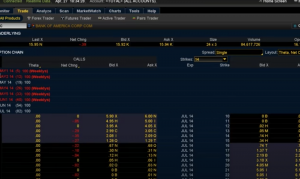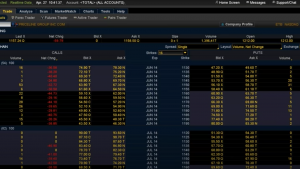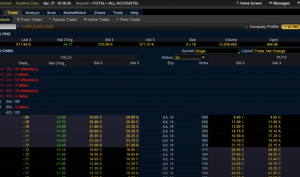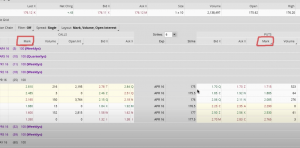 Investing is the act of putting your money into an investment that will yield a profit in the long run. There are many different forms of investments you can make such as stocks, bonds, mutual funds, certificates of deposits and gold. In order to be successful in investing, you need to understand how they work and how to choose the best one for you.
Investing is the act of putting your money into an investment that will yield a profit in the long run. There are many different forms of investments you can make such as stocks, bonds, mutual funds, certificates of deposits and gold. In order to be successful in investing, you need to understand how they work and how to choose the best one for you.
Investing is basically to put your money into the hopes of earning some future money. Many investors put their money into real estate or stock market investments when they are young and the money is usually made later on. This is what most people refer to as being a ‘gamble.’ As you age though, investing can become more of a riskier proposition since there is no guarantee that the money will be there when you need it.
When making investments, your goal is to purchase a security with the highest possible market value. You want to do this as early in life as possible because at a young age, the market is not yet saturated with all available investments. This means that you can purchase the best possible asset at a lower price.
The good news about investing is that it is generally considered to be a very safe and low-risk venture. This is because the returns you will reap from investing are typically tax deferred and do not have any long term ramifications.
It’s worth noting that when it comes to investing, you should always check with an accountant before you do anything. They can help you decide what type of investment strategies are appropriate for you and what investments are best for your financial situation. An accountant can also help you evaluate the potential risks associated with investing so that you can minimize them.
There are also many types of investments you can make, and they include both real estate and stocks. Real estate investing includes investments like purchasing a house, apartment complex, condo building, or other investment property. A lot of people invest in houses to turn them into rental properties. On the flip side, you can also invest in stocks if you’re looking for a short term investment. A stock investment is a good way to build up cash because it does not require you to pay out any cash unless you make a profit.
The most important thing to remember when investing is to do your homework. Find the information you need online or ask someone who has been investing for a long time about the best way to invest. Investing is an exciting but dangerous business. Always follow your gut feelings and always trust the advice of an experienced investor.
One final note about investing: when the stock market or real estate market is going through a boom or experiencing a period of high interest rates, investing can get expensive. So invest wisely and take advantage of all the bargains you can.
To do so, make sure you have some money set aside for emergencies or shortfalls. Remember, no matter how good a deal you find on a house or investment property, it is still possible that it will not be a good decision for your personal financial situation.
The next time you are thinking of investing, make sure you read up on some tips and tricks for making the best use of your money. Investing requires patience and discipline. You should be able to learn the ins and outs of the market and how to make money. As you progress, you’ll be able to learn more about investing and you’ll understand how the different investments work together.
In order to manage your portfolio effectively, you should regularly review it. This can help you understand which investments are working and which ones are not. You should make sure you don’t overspend or get too caught up in the hype. Investing is all about being a smart investor and you can only do that when you have a clear picture of what you want to achieve.
When you are ready, make sure you have a solid and sound financial plan for your portfolio. It’s not a good idea to start an investment without one.
 Options trading can be likened to an insurance policy in the stock market where the risks of loss are lessened. However, with options trading, there are several other considerations as compared to the other forms of stock trading such as market risk and the presence of a margin.
Options trading can be likened to an insurance policy in the stock market where the risks of loss are lessened. However, with options trading, there are several other considerations as compared to the other forms of stock trading such as market risk and the presence of a margin. A covered call is an
A covered call is an  Naked puts are an option contract that allows the option seller to sell a stock without holding the underlying asset. This is done by selling the right to buy the stock on an upcoming date at a specified price in the future, without holding any financial instruments or the related rights and privileges of ownership.
Naked puts are an option contract that allows the option seller to sell a stock without holding the underlying asset. This is done by selling the right to buy the stock on an upcoming date at a specified price in the future, without holding any financial instruments or the related rights and privileges of ownership.